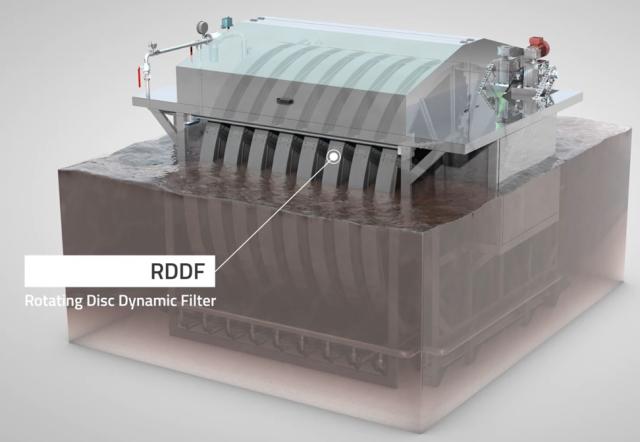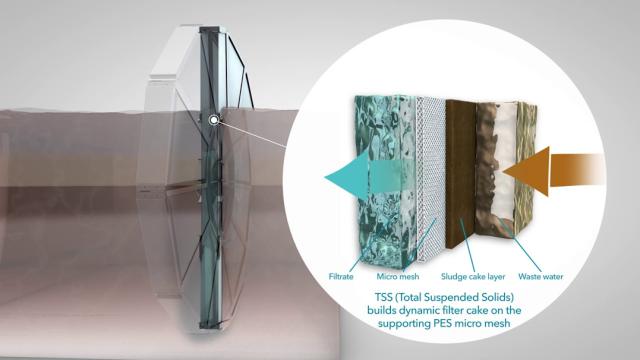At the end of January 2024 CNR-IRSA, partner in Pavitra Ganga, published an open access scientific article in MDPI Processes about the self-forming dynamic membrane bioreactor (SFD-MBR). The article describes the results of bench-scale tests on two nylon meshes with pore sizes of 20 and 50 µm for the formation of a dynamic membrane and effective operation of SFD MBR.
A self-forming dynamic membrane bioreactor (SFD MBR) is a cost-effective alternative to conventional membrane bioreactors (MBR), in which the synthetic membrane is replaced by a “cake layer”, an accumulation of the biological suspension originated by filtration over a surface of inert, low-cost support.
Under optimized conditions, the cake layer is easy to remove and quick to form again, resulting in a “dynamic membrane” (DM). The permeate of the SFD MBR has chemo-physical characteristics comparable to those of conventional ultrafiltration-based MBR.
20 µm nylon mesh
In the latest paper, two nylon meshes with pore sizes of 20 and 50 μm, respectively, were tested in a bench-scale SFD MBR in which an air mass load (AML) was periodically supplied tangentially to the filtration surface to maintain filtration effectiveness. The SFD MBR equipped with 20 μm nylon mesh coupled with 5 min of AML every 4 h showed the best performance, ensuring both a permeate with turbidity values always below 3 NTU and revealing no increases in transmembrane pressure (TMP) with manual maintenance needs.
A benchmark test with the only difference of a suction break (relaxation) instead of AML was conducted under identical operating conditions for validation with an already known DM maintenance strategy. This latter test produced a permeate of very good quality, but it needed frequent manual cleanings due to TMP increase, showing that a periodic AML coupled with the use of a 20 μm mesh can be an optimal strategy for long-term operation of SFD MBR.


